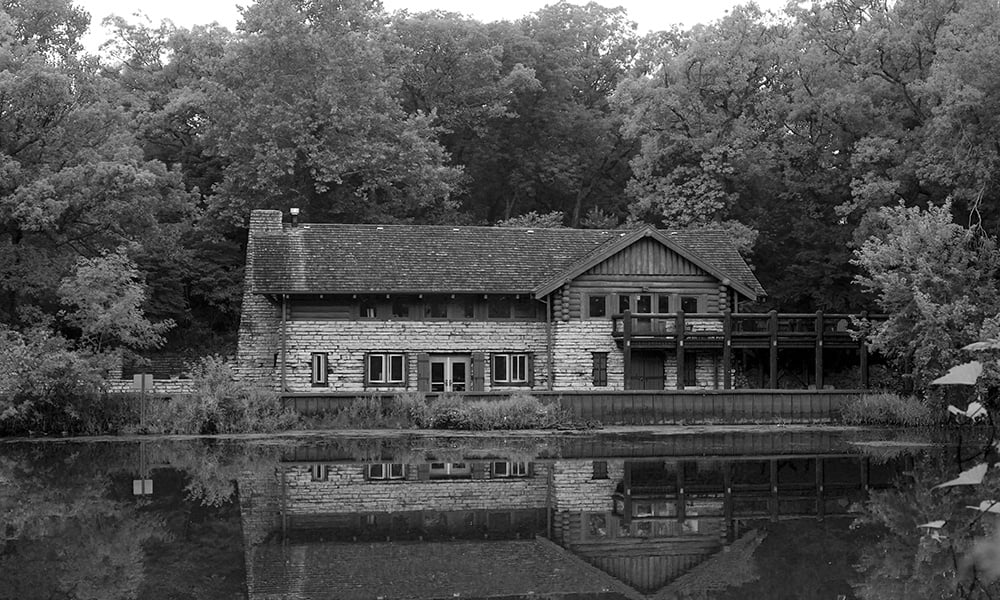
When you visit a DuPage forest preserve to connect with nature, you don’t often consider its history and how it came to be developed as a preserve.
Construction of the trails we navigate, the bridges we cross, or the shelters we have picnics in may seem unimportant, but the creation of Fullersburg Woods Forest Preserve in Oak Brook has a rich history that is part of a national legacy of parks built during one of the toughest times this country has ever faced.
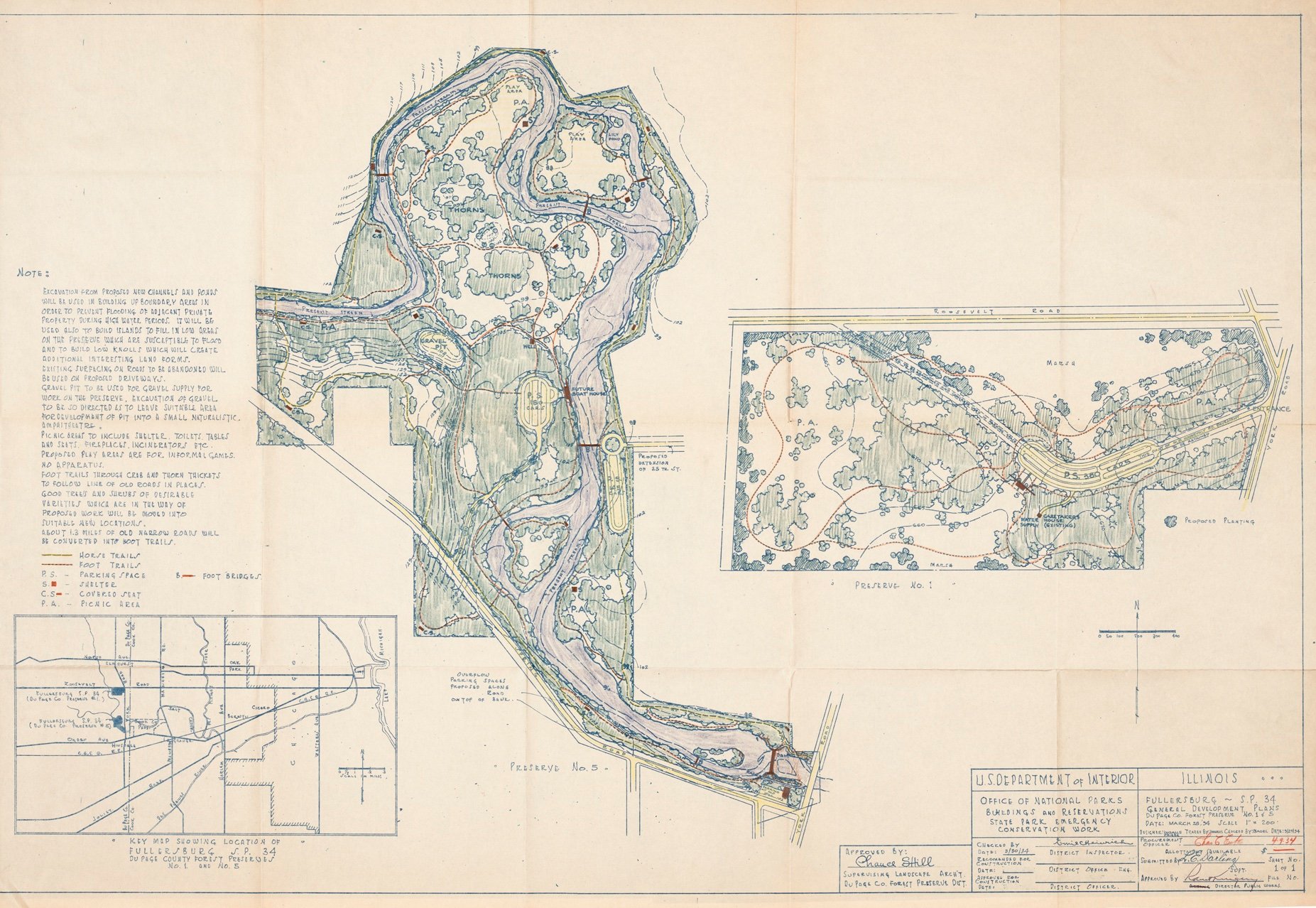
The original landscape plan of Fullersburg Woods details the development projects of the preserve. Photo courtesy Forest Preserve District of Cook County records, University of Illinois Chicago Library FPDCC_05_06_000_1200_002.
A National Response to Crisis
In 1933, newly elected President Franklin D. Roosevelt created the New Deal, a series of projects and programs to help put Americans back to work and strengthen the economy during the Great Depression. One of these programs, the Civilian Conservation Corps (CCC) provided jobs to mostly young, unemployed men that focused on improving public parks and natural resources throughout the country.
Members of the CCC lived in barracks on their worksite at camps run by the Army, where they were clothed, fed and paid $30 dollars a month, $25 of which was sent directly to their families. They received training, education and developed skillsets in trades to help them be employable in the future. Individual camps were part of a larger, local CCC community; camps produced their own monthly newspapers and networked with other local camps, even competing against each other in sports leagues.
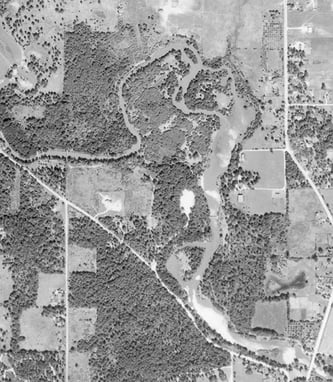
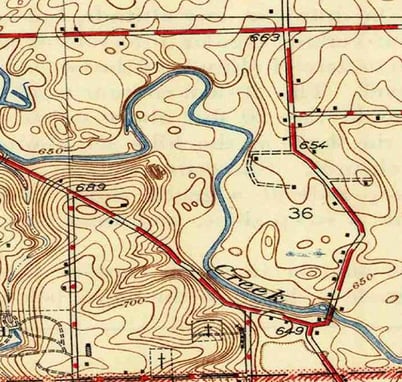
A comparison of the 1939 aerial photo of Fullersburg Woods with a 1927 map of Hinsdale reveals alterations to Salt Creek as part of CCC projects, including the creation of islands.
1939 photo courtesy of https://clearinghouse.isgs.illinois.edu/
1927 map courtesy of https://ngmdb.usgs.gov/img4/ht_icons/overlay/IL/IL_Hinsdale_307829_1927_24000_geo.jpg
The CCC Leave a Legacy at Fullersburg Woods
From December 1933 to April 1938, CCC Camp V-1668 was stationed at Fullersburg Woods Forest Preserve in Oak Brook, with the purpose of developing the property for public recreational use.
Camp V-1668 was not comprised of the typical CCC enrollees; it was a camp for military veterans who were much older than the 18-25 age range required for the non-veteran participants, who would have been young children when V-1668 veterans were serving overseas during World War I.
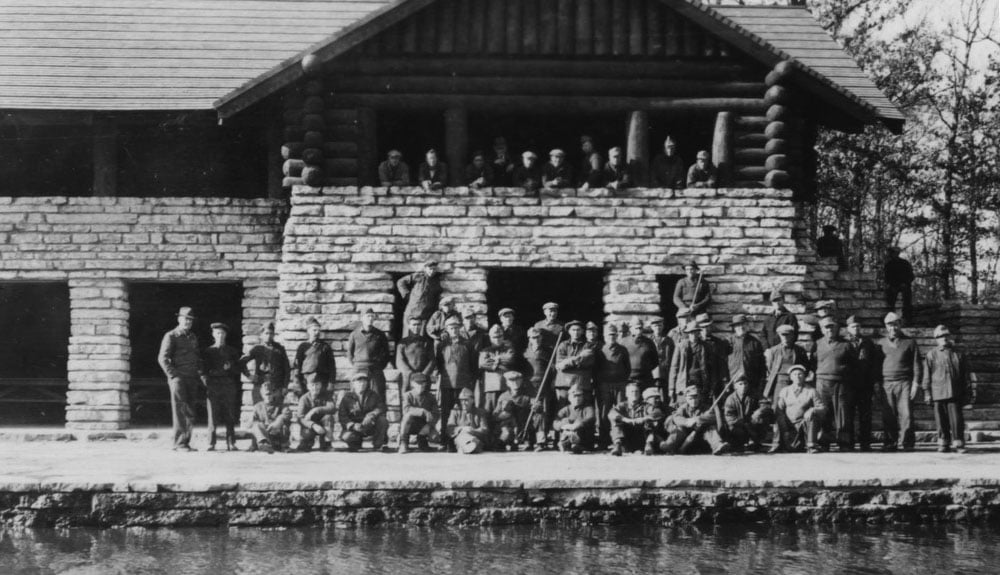
CCC enrollees pose in front of the completed boat house that now serves as a nature education center.
In four years, the men of V-1668 completed extensive projects that transformed Fullersburg Woods, including Salt Creek, which meanders through the property. Salt Creek was graded and islands were created to utilize flood areas. They constructed trails, parking lots and picnic areas. Structures built included shelters, footbridges across Salt Creek, as well as a boathouse for rentals and a concession stand.
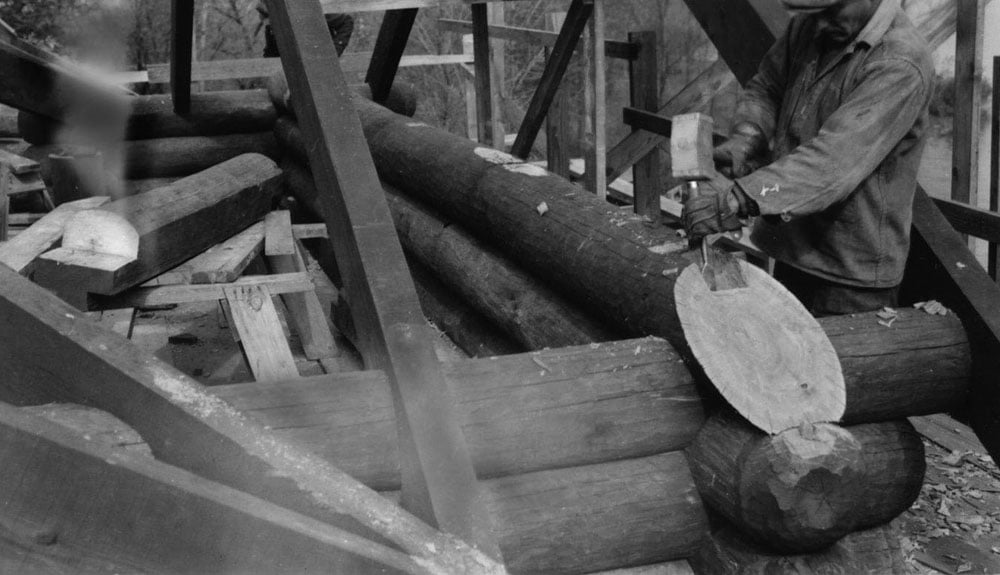
A CCC enrollee chisels a log during the boat house construction. The structure was built by hand, not by power tools.
Repurposing Historical Works
Since the work was completed 83 years ago, Fullersburg Woods has remained a popular destination for visitors as a place to walk, picnic, fish and paddle. Although there are no longer boat rentals, in the 1970s the building was enclosed and repurposed as a nature education center. Several other structures remain in use today, including shelters and covered benches.
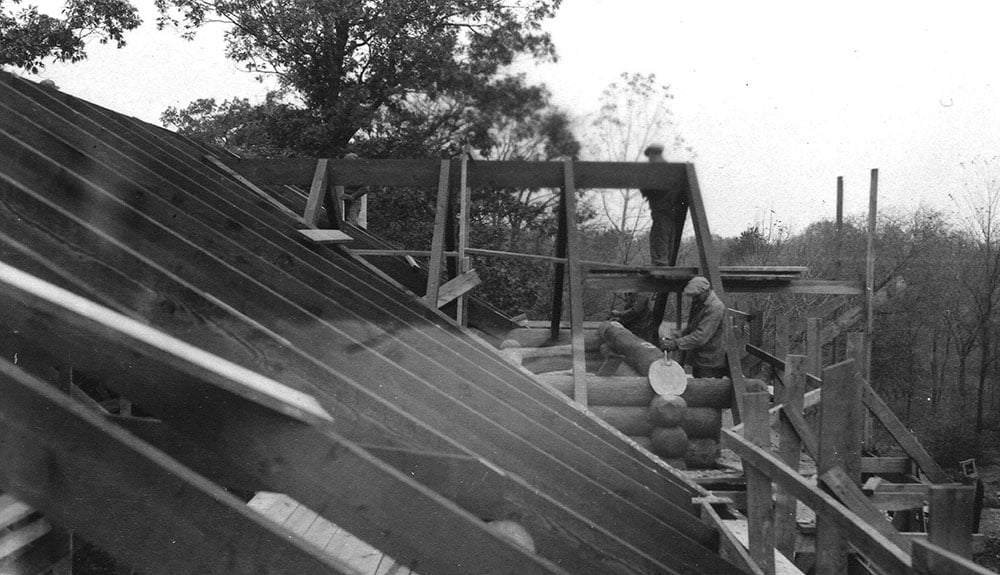
Parkitecture
Using local timber and stone quarried from Rocky Glen, V-1668 enrollees hand-built these structures in a style known as “parkitecture”. Referring to a rustic style of structures found in parks throughout the country, parkitecture originally stemmed from the National Park Service, which helped run the CCC. This style of building is designed with the goal of blending into a park’s natural surroundings so it doesn’t detract from the visitor’s overall perception and experience of being in nature.
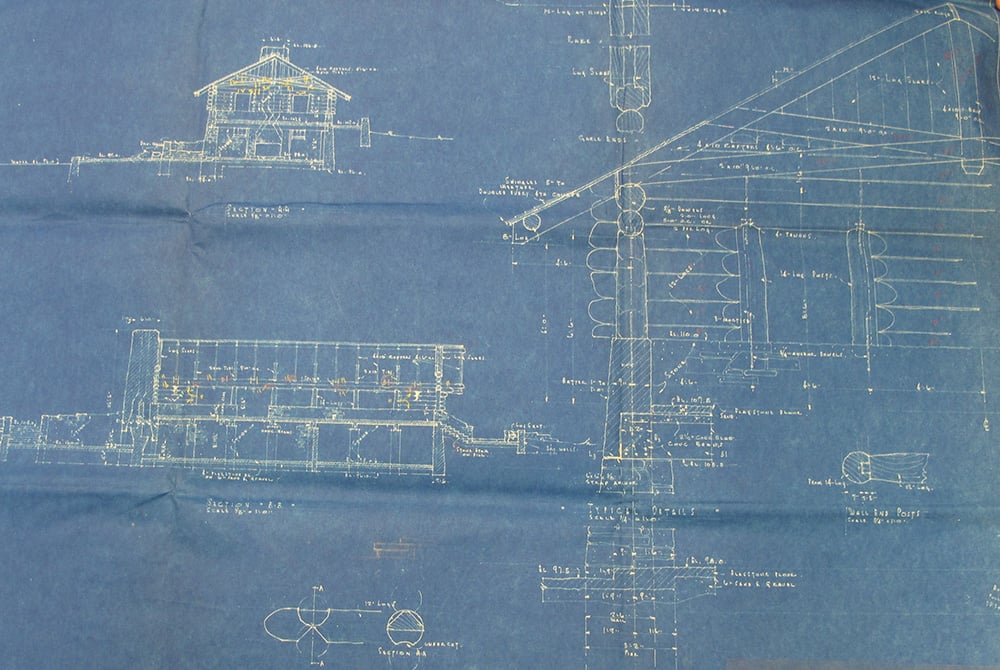
Original blueprint of the boat house which was completed by the CCC in 1936. Photo courtesy of Forest Preserve District of DuPage County records, University of Illinois Chicago Library FPDCC_05_06_0000_1189_012.
Restoration Finished
The Forest Preserve District took the opportunity to improve the Fullersburg Woods nature education center when the building temporarily closed its doors to the public in March 2020 due to the COVID-19 pandemic.
Last summer, the exterior of the original boathouse was restored. District facility maintenance staff meticulously removed several layers of paint applied over the decades, sanded the logs, and applied a water-based stain that now reflects the original wood finish completed by the CCC in 1936.
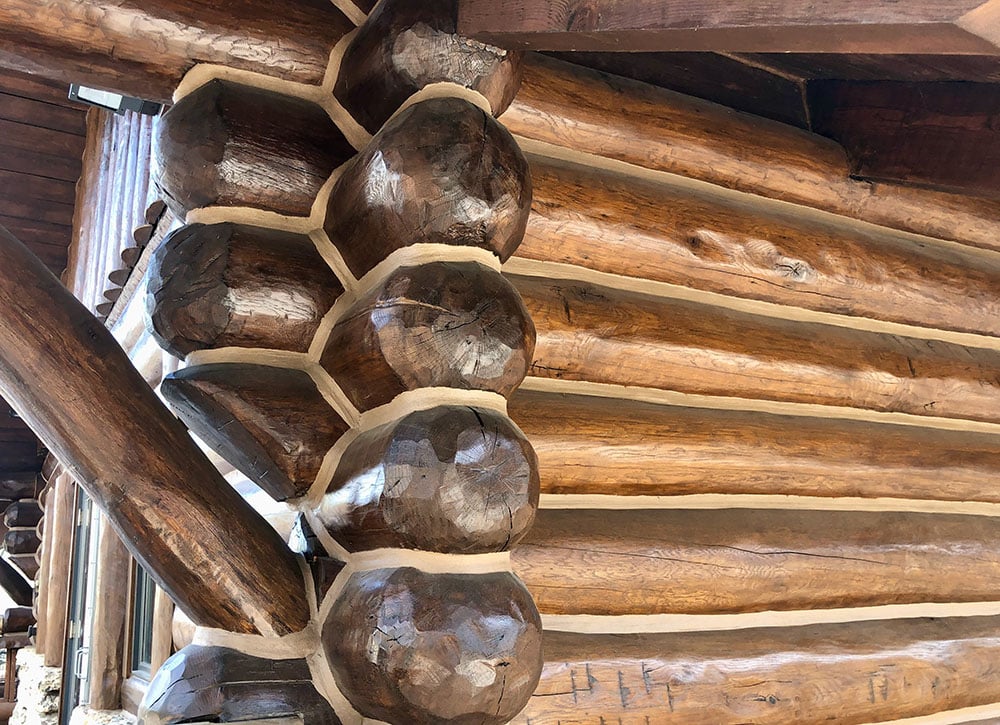
Removing the paint and applying a water-based stain to the wood reveals the craftmanship of the CCC enrollee’s handwork.
The restoration reveals the craftsmanship of the timbers, which were finished with hand tools during its construction, and showcases the building’s character that had been hidden under layers of paint. Chinking was added between the logs to better seal the indoor space and regulate the building’s temperature, conserving energy.
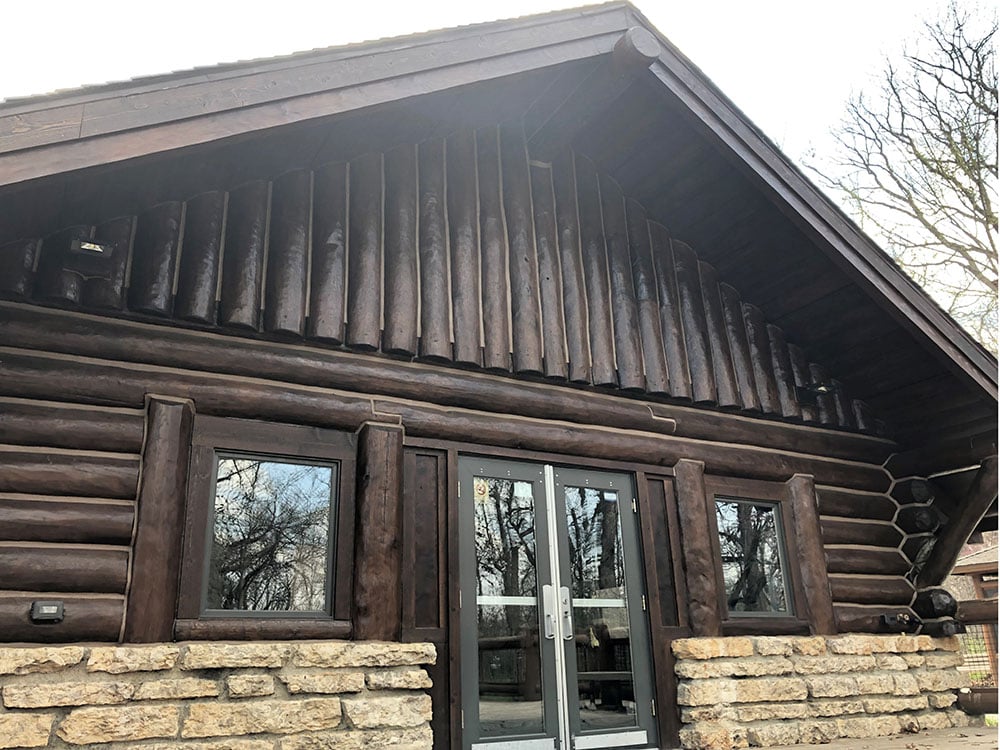
Recent exterior restoration of the nature education center showcases original timbers of CCC boat house.
The Civilian Conservation Corps created an infrastructure that provided us with access and opportunities for recreation that we still use today — more than 80 years later. Their work has shaped the landscape and how we use parks throughout the country, including DuPage County. The men also completed projects that are still used at other DuPage County forest preserves, including York Woods, Herrick Lake, McDowell Grove, Pioneer Park and the Rocky Glen waterfall at Waterfall Glen.
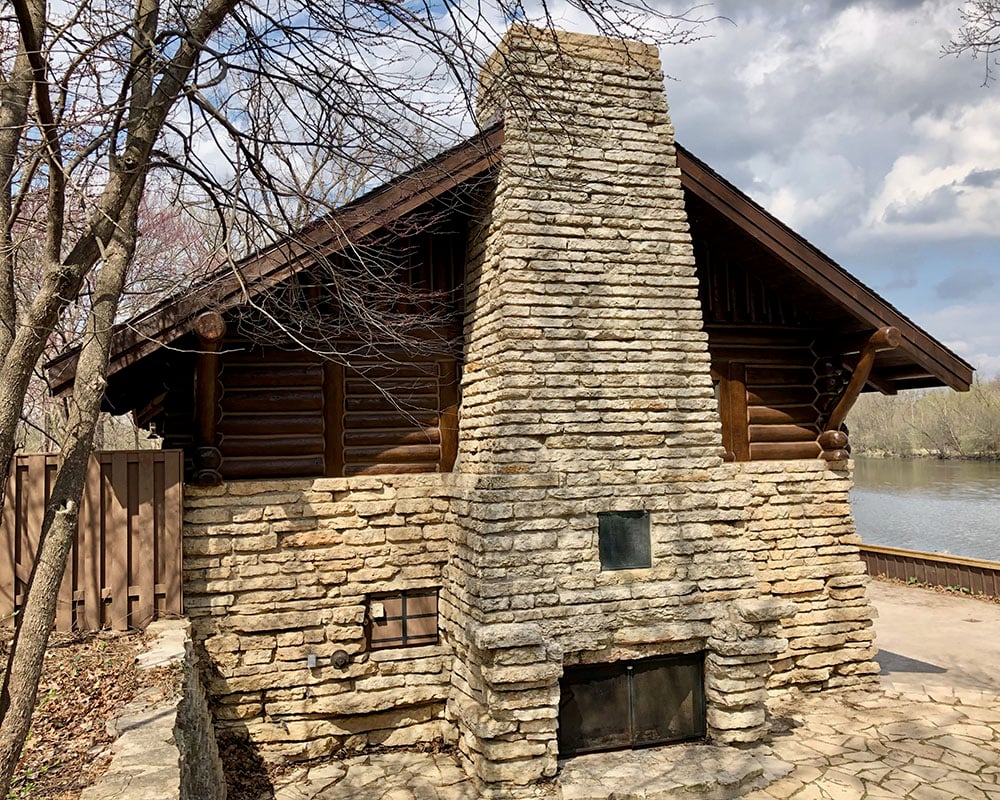
The nature education center features an original exterior fireplace that is still working today, with recent stone replaced at the top of the chimney. A Camp Fullersburg newspaper stated that the stone was quarried from the “Rocky Glen tract”, now known as Waterfall Glen Forest Preserve.
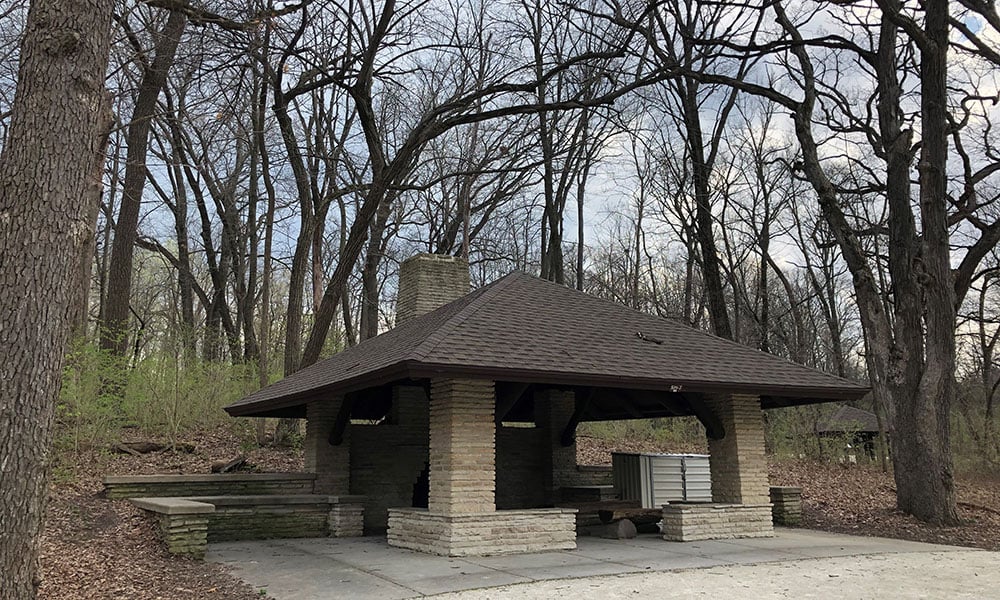
Constructed by the CCC, the Riverbend shelter overlooks Salt Creek at Fullersburg Woods and remains to be a popular spot to rest and take in the scenery.
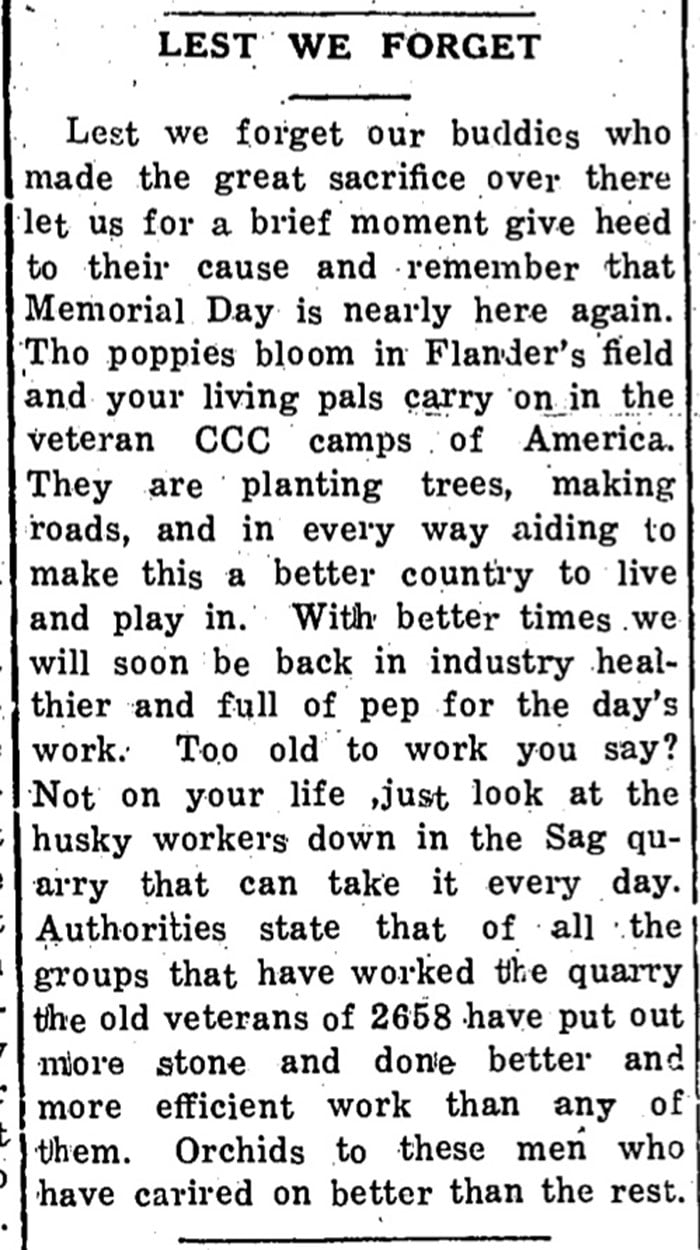
A memorial day tribute published in the Camp Fullersburg newspaper, The Fullersburg Grit. Published May 29th, 1936.
About Hidden History blogs
From glaciers to mounds, mammoths and farms, each month we highlight the often-overlooked history of our preserves and provide context to deepen your connection to the land, as well as tell the stories revealed to us through the objects and formations left behind. Stay tuned as our blog contributors bring you closer to your community through story every month.